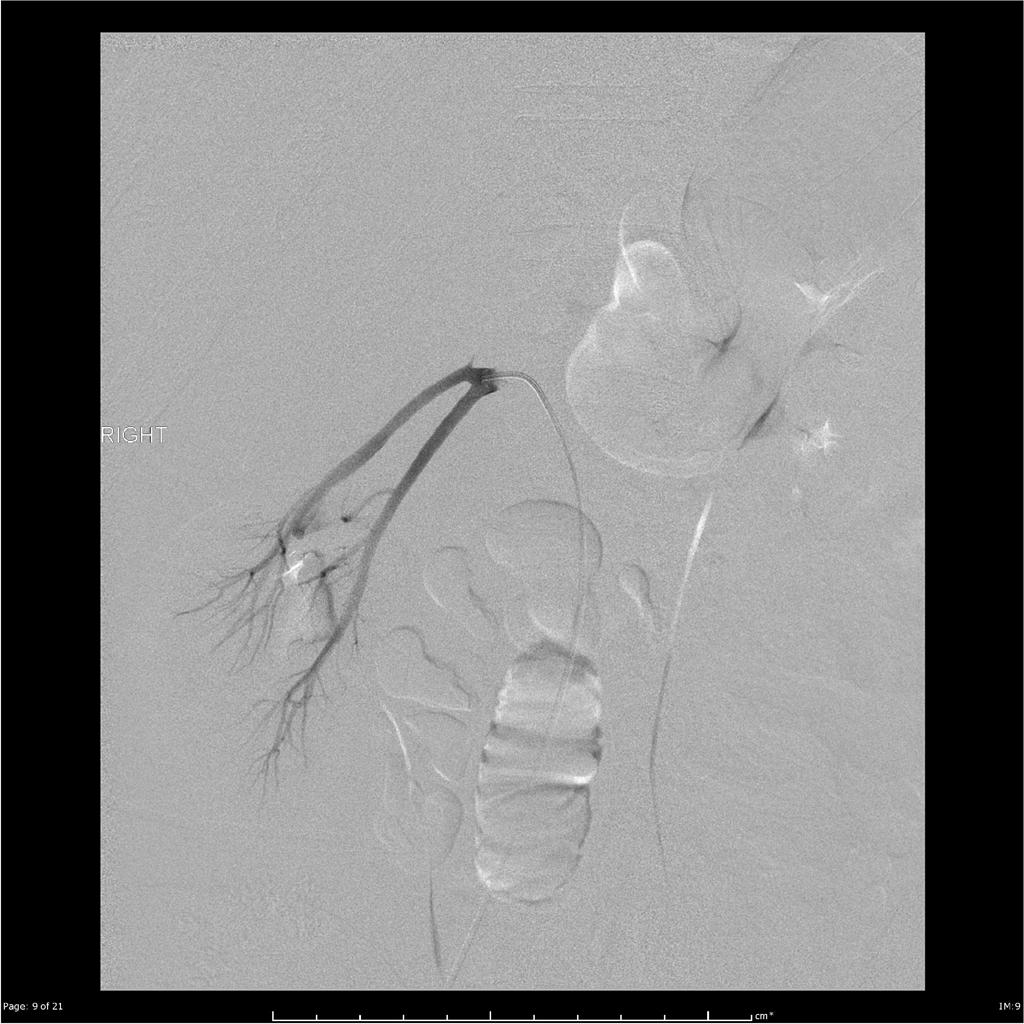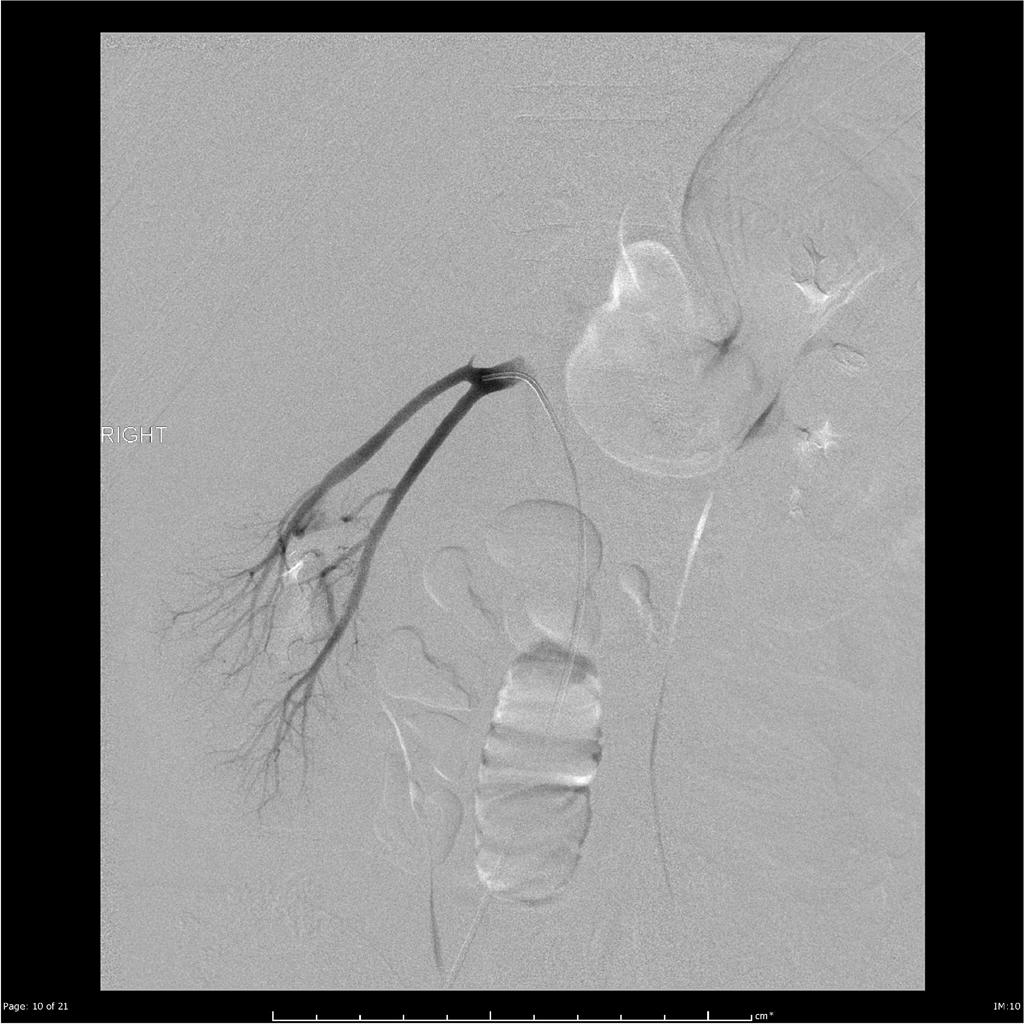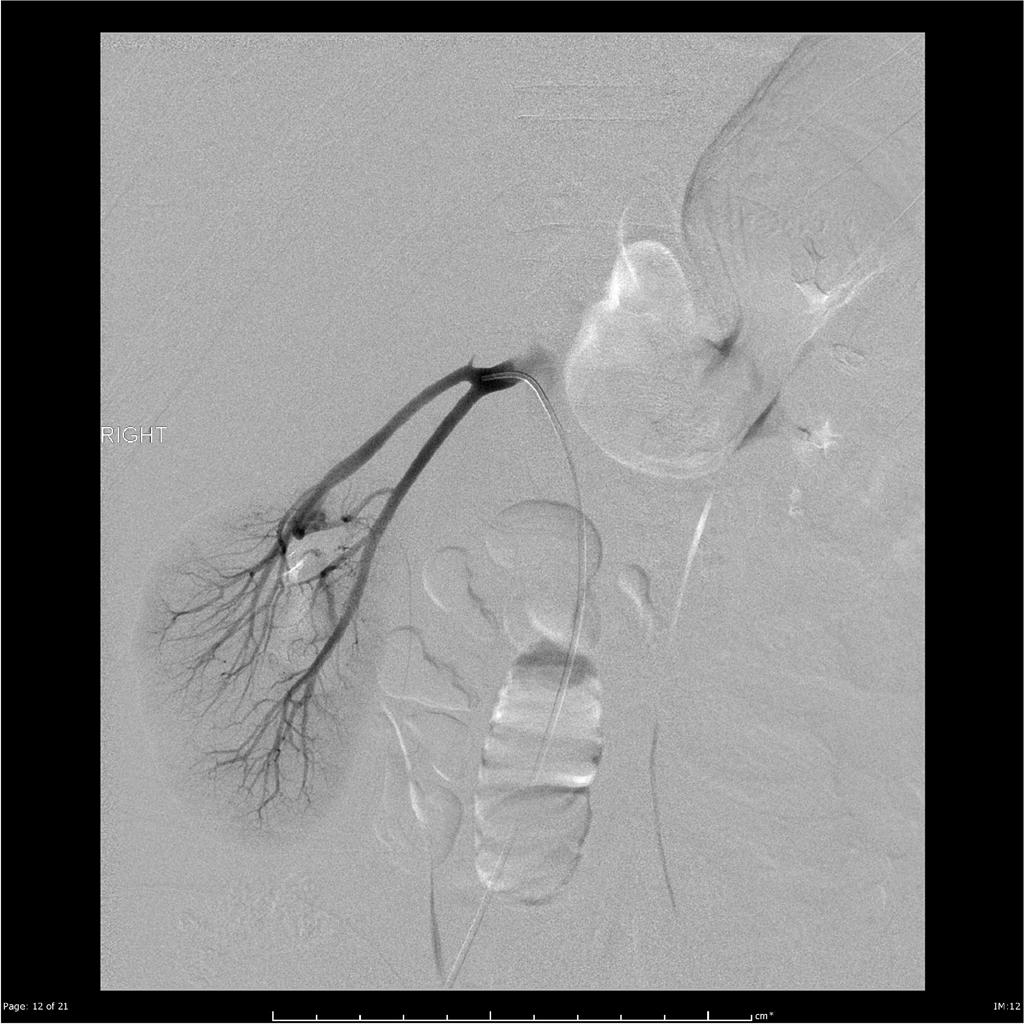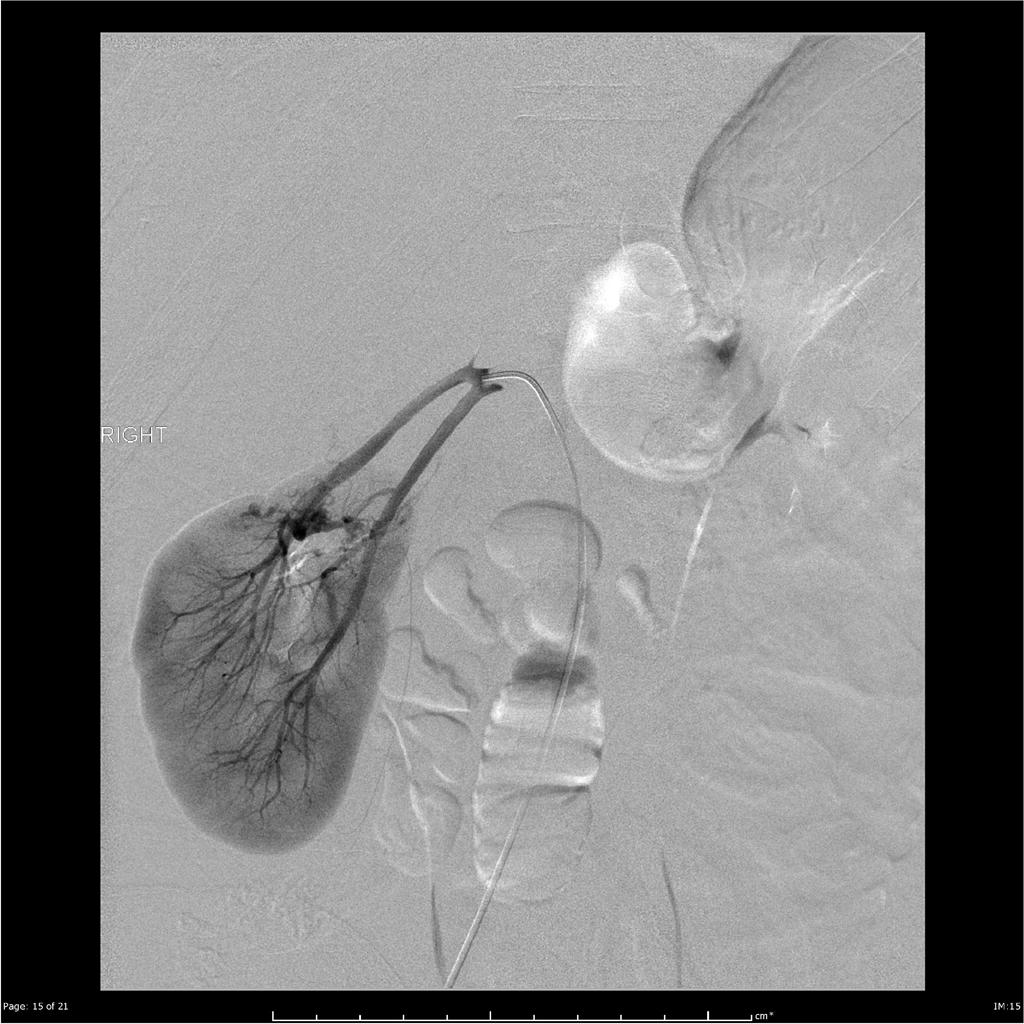Angiomyolipoma surgery
|
Angiomyolipoma Microchapters |
|
Diagnosis |
|---|
|
Treatment |
|
Case Studies |
|
Angiomyolipoma surgery On the Web |
|
American Roentgen Ray Society Images of Angiomyolipoma surgery |
|
Risk calculators and risk factors for Angiomyolipoma surgery |
Editor-In-Chief: C. Michael Gibson, M.S., M.D. [2] Associate Editor(s)-in-Chief: Faizan Sheraz, M.D. [3],Rekha, M.D.
Overview
Surgery is not the first-line treatment option for patients with angiomyolipoma. Transcatheter arterial embolization is usually reserved for patients with complicated disease.
Surgery
Angiomyolipoma do not normally require surgery unless there is life-threatening bleeding.[1]
Transcatheter Arterial Embolization
Embolisation is considered as a safe and effective method for treating patients with Angiomyolipoma. Recently, it has been recommended that prophylactic trans-catheter arterial embolization can be performed in case of large angiomyolipoma that is greater than 4 cm in size.[2][3]
- Proximal Embolization
- Distal Embolization
- These are appropriate for the occlusion of a large lumen with distal migration
- Palliative Embolization
- Embolization in patients with end-stage renal disease
-
A
-
B
-
C
-
D
- Figures A-D: Angiographic runs showed a significantly ptosed right kidney, with supply to the large upper pole angiomyolipoma via tortuous artery arising from the superior division of the right renal artery.[4]
Embolization Procedure
- Selective catheterization of the branch supplying the angiomyolipoma is achieved via microcatheter
- Contrast is infused
- Embolization is usually performed using a 50:50 dilution of absolute alcohol in lipiodol
- A total of 12 mL is injected under careful angiographic observation to ensure no reflux to vessels supplying renal cortex
Partial Nephrectomy
- Larger, symptomatic and ruptured angiomyolipomas, can be electively resected with a partial nephrectomy, with the advantage of a kidney preservation and the benefits of a minimal invasive procedure without compromising the safety of the patient[5]
- It has been shown that the pretreatment with the sirolimus an mTOR inhibitor facilitates the nephron sparing resection by reducing the tumor volume by 38-95%.[6]
Complete Nephrectomy:
- Complete nephrectomy is usually considered in cases where risk of development of the urinary fistula and of hemorrhage is high after partial nephrectomy.
Radiofrequency Ablation or Cryoablation:
- It is considered to be safe and effective alternative to embloization and nephron sparing surgery, used in the treatment of renal masses <3 cm or smaller without bleeding complications.[7][8][9][10]
References
- ↑ Lewis JH, Weingold AB (1985). "The use of gastrointestinal drugs during pregnancy and lactation". Am J Gastroenterol. 80 (11): 912–23. PMID 2864852.
- ↑ Ryan JW, Farrelly C, Geoghegan T (2018). "What Are the Indications for Prophylactic Embolization of Renal Angiomyolipomas? A Review of the Current Evidence in the Literature". Can Assoc Radiol J. 69 (3): 236–239. doi:10.1016/j.carj.2018.01.002. PMID 29804911.
- ↑ Leong S, Keeling AN, McGrath FP, Lee MJ (2010). "Transcatheter embolisation of renal angiomyolipoma". Ir J Med Sci. 179 (2): 211–6. doi:10.1007/s11845-009-0390-9. PMID 19618235.
- ↑ Image courtesy of Dr. Andrew Lawson. Radiopaedia(original file [1]). Creative Commons BY-SA-NC
- ↑ Ploumidis A, Katafigiotis I, Thanou M, Bodozoglou N, Athanasiou L, Ploumidis A (2013). "Spontaneous Retroperitoneal Hemorrhage (Wunderlich Syndrome) due to Large Upper Pole Renal Angiomyolipoma: Does Robotic-Assisted Laparoscopic Partial Nephrectomy Have a Role in Primary Treatment?". Case Rep Urol. 2013: 498694. doi:10.1155/2013/498694. PMC 3784227. PMID 24106637.
- ↑ Staehler M, Sauter M, Helck A, Linsenmaier U, Weber L, Mayer K; et al. (2012). "Nephron-sparing resection of angiomyolipoma after sirolimus pretreatment in patients with tuberous sclerosis". Int Urol Nephrol. 44 (6): 1657–61. doi:10.1007/s11255-012-0292-z. PMID 23054313.
- ↑ Atwell TD, Schmit GD, Boorjian SA, Mandrekar J, Kurup AN, Weisbrod AJ; et al. (2013). "Percutaneous ablation of renal masses measuring 3.0 cm and smaller: comparative local control and complications after radiofrequency ablation and cryoablation". AJR Am J Roentgenol. 200 (2): 461–6. doi:10.2214/AJR.12.8618. PMID 23345372.
- ↑ Sooriakumaran P, Gibbs P, Coughlin G, Attard V, Elmslie F, Kingswood C; et al. (2010). "Angiomyolipomata: challenges, solutions, and future prospects based on over 100 cases treated". BJU Int. 105 (1): 101–6. doi:10.1111/j.1464-410X.2009.08649.x. PMID 19493268.
- ↑ Prevoo W, van den Munckhof MP, Meinhardt W, Horenblas S, van den Bosch MA (2010). "Radiofrequency ablation of kidney tumours in patients with a solitary kidney". Clin Radiol. 65 (3): 230–6. doi:10.1016/j.crad.2009.11.007. PMID 20152280.
- ↑ Castle SM, Gorbatiy V, Ekwenna O, Young E, Leveillee RJ (2012). "Radiofrequency ablation (RFA) therapy for renal angiomyolipoma (AML): an alternative to angio-embolization and nephron-sparing surgery". BJU Int. 109 (3): 384–7. doi:10.1111/j.1464-410X.2011.10376.x. PMID 22176671.



